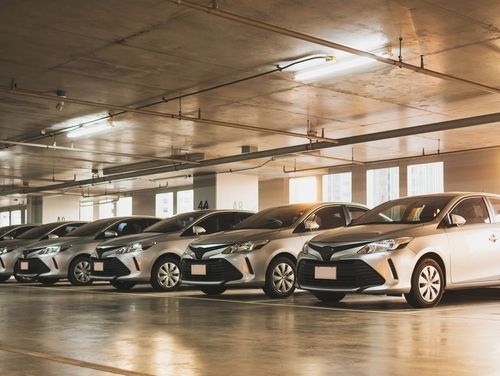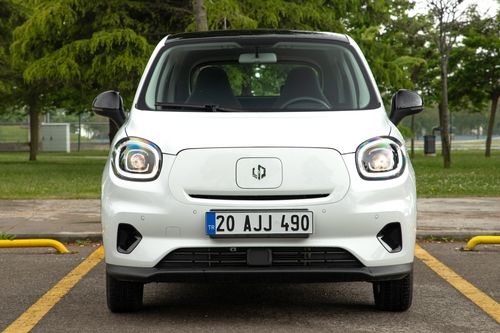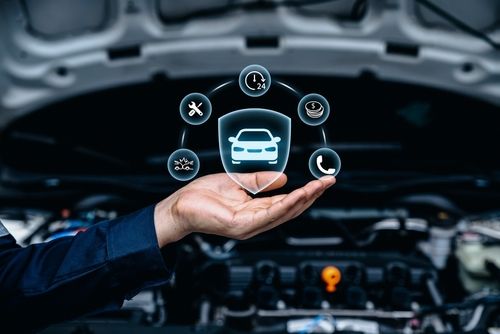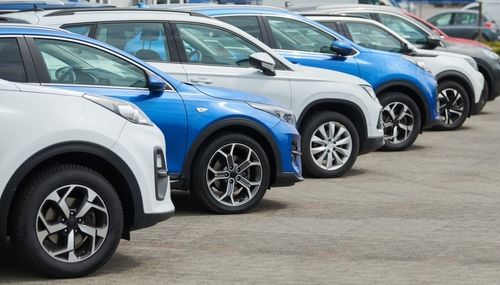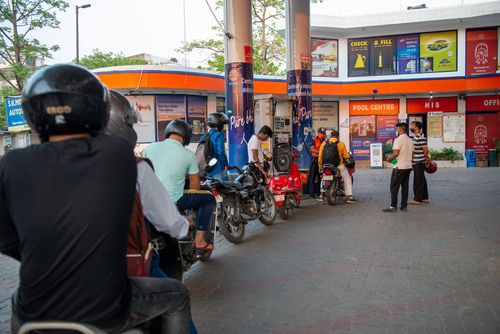Comprehensive Car Insurance: What’s Covered and What’s Not
Written by Upstox Desk
Published on May 27, 2025 | 5 min read

Rishi’s prized possession, his luxury sedan, started to give him some trouble with the sunroof malfunctioning. He bought this car two years ago and had clocked around 35000 kms during that time. He always opted for comprehensive motor insurance with add-ons such as engine protection and zero-dep cover. Since his car was a critical part of his personality and nothing could go wrong there, he decided to claim insurance and get the sunroof replaced or repaired.
However, when he contacted the helpline, he was informed that normal wear and tear due to prolonged car usage is not covered, even under a comprehensive policy. He could not understand what ‘comprehensive’ stood for, as a basic (as per his understanding) claim was rejected. His car dealer asked him to file for a warranty claim as the car was still under the manufacturer’s warranty. He got the sunroof replaced, but had serious doubts about ‘comprehensive coverage’ as promised by motor insurance service providers.
There are many like Rishi who do not completely understand the meaning and implications of having a ‘comprehensive’ motor insurance. If one goes by the face value of the term, it is implied that such insurance would cover everything under the sun. However, it does not practically work that way. While it does offer wider protection than third-party insurance, there are still some crucial exclusions that every car owner should be aware of.
If you are looking to buy a new insurance policy or are about to renew an existing one, it is important that you have clarity in respect of the inclusions and exclusions of a comprehensive car insurance policy.
What is Comprehensive Car Insurance?
In India, having third-party coverage insurance is necessary to drive a car legally. However, such a policy would not cover any damages resulting from an accident or the complete loss of a vehicle. In such a case, a comprehensive car insurance policy steps in, which offers protection beyond the basic third-party coverage. It safeguards against a range of risks, including road accidents, theft, natural calamities like floods or earthquakes, fire, vandalism, and even third-party liabilities.
However, the word ‘comprehensive’ does not mean it is an all-encompassing insurance policy, and you must be aware of different limitations to avoid any unpleasant surprises in case of a claim.
What’s Covered in Comprehensive Car Insurance
Let us first evaluate the inclusions in a comprehensive car insurance policy:
Accidental Damages
Covers the cost of repairing or replacing your vehicle in case of damage due to collisions, road mishaps, or overturning. It is a crucial tool to provide you with financial relief in the event of a car mishap.
Natural Calamities
Offers protection against losses caused by events like floods, earthquakes, cyclones, landslides, and storms.
Man-made Disasters
Includes coverage for damages resulting from riots, vandalism, terrorism, strikes, and other civil disturbances.
Theft or Burglary
Provides compensation if your insured vehicle is stolen or parts are burglarised.
Fire and Explosion
Covers damages due to accidental fire, self-ignition, or explosion that harm your vehicle.
Third-party Liability
Offers legal and financial cover for injuries, death, or property damage caused to a third party by your vehicle.
Personal Accident Cover
Mandatory cover (as per IRDAI guidelines) for the owner-driver, providing compensation in case of accidental death or permanent disability.
What’s Not Covered in Comprehensive Car Insurance
Here comes the tricky part. You should be aware of exactly what the exclusions are in a comprehensive car insurance policy. Here is a list of common things not covered under a comprehensive policy:
-
Driving Without a Valid License: Claims are rejected if the driver was unlicensed or holding an invalid license at the time of the incident.
-
Driving Under Influence: No coverage if the driver was intoxicated with alcohol or drugs during the accident.
-
Mechanical or Electrical Failures: Regular wear, tear*, or technical breakdowns are not covered unless add-ons are taken.
*Just like in the original example, Rishi’s case should be considered as a mechanical or electrical failure for which an insurance claim cannot be filed.
-
Consequential Damages: Indirect damages, like engine seizure due to oil leaks or waterlogging, are excluded unless specifically covered.
-
Depreciation of Parts: The reduced value of parts over time isn't covered unless you opt for a zero depreciation add-on.
-
Commercial Use or Racing: Using a private vehicle for commercial purposes or racing voids the coverage.
How to Boost Your Comprehensive Car Insurance Policy?
In order to ensure that the probability of your claim rejections could be reduced, you have the option to boost your comprehensive car insurance policy by choosing a range of add-ons. Here are the most common add-ons people opt to enhance overall coverage (however, this would increase your net payable premium):
Zero Depreciation Cover
Ensures full claim settlement without factoring in the depreciation of replaced parts.
Engine Protection Cover
Covers engine and gearbox damage due to water ingress, oil leakage, or hydrostatic lock. This is particularly critical for regions that receive high rainfall and waterlogging during monsoon.
Return to Invoice Cover
In the event of total loss or theft, this add-on pays the original invoice value of the car, rather than the depreciated insured value. This add-on is not available after the vehicle has been aged a certain age.
Roadside Assistance Cover
Offers 24/7 support, including towing, battery jump-starts, fuel delivery, and on-site repairs during breakdowns.
NCB Protection Cover
Retains your No Claim Bonus discount even after making a claim, helping lower renewal premiums. It means that if you had accumulated NCB (as you did not make any claims) for a couple of years and then had to claim in the corresponding year, this add-on will help you retain the offered discount.
Summing Up
We always recommend comprehensive car insurance due to its comprehensive features and inclusions. You can further enhance its value by considering various applicable add-ons. However, there are a few limitations of comprehensive car insurance that you must remember while making a claim. Being aware of what’s covered and what’s not helps you make informed decisions, avoid claim disputes, and ensure better financial security.
FAQs
-
Is comprehensive car insurance mandatory?
No, only third-party insurance is mandatory by law; comprehensive coverage is optional but recommended.
-
Does comprehensive insurance cover engine damage?
Not by default. You need an engine protection add-on to cover water or oil-related engine issues.
-
Will I get the full value of my car if it’s stolen?
Only if you have the "Return to Invoice" add-on; otherwise, you get the Insured Declared Value (IDV).
-
Can I claim for damage if I was driving drunk?
No, insurance claims are not valid if you were under the influence at the time of the accident.
-
Does the policy cover tyre or battery wear and tear?
No, normal wear and tear, including tyres and batteries, isn’t covered unless damaged in an accident.
About Author
Upstox Desk
Upstox Desk
Team of expert writers dedicated to providing insightful and comprehensive coverage on stock markets, economic trends, commodities, business developments, and personal finance. With a passion for delivering valuable information, the team strives to keep readers informed about the latest trends and developments in the financial world.
Read more from UpstoxUpstox is a leading Indian financial services company that offers online trading and investment services in stocks, commodities, currencies, mutual funds, and more. Founded in 2009 and headquartered in Mumbai, Upstox is backed by prominent investors including Ratan Tata, Tiger Global, and Kalaari Capital. It operates under RKSV Securities and is registered with SEBI, NSE, BSE, and other regulatory bodies, ensuring secure and compliant trading experiences.


















